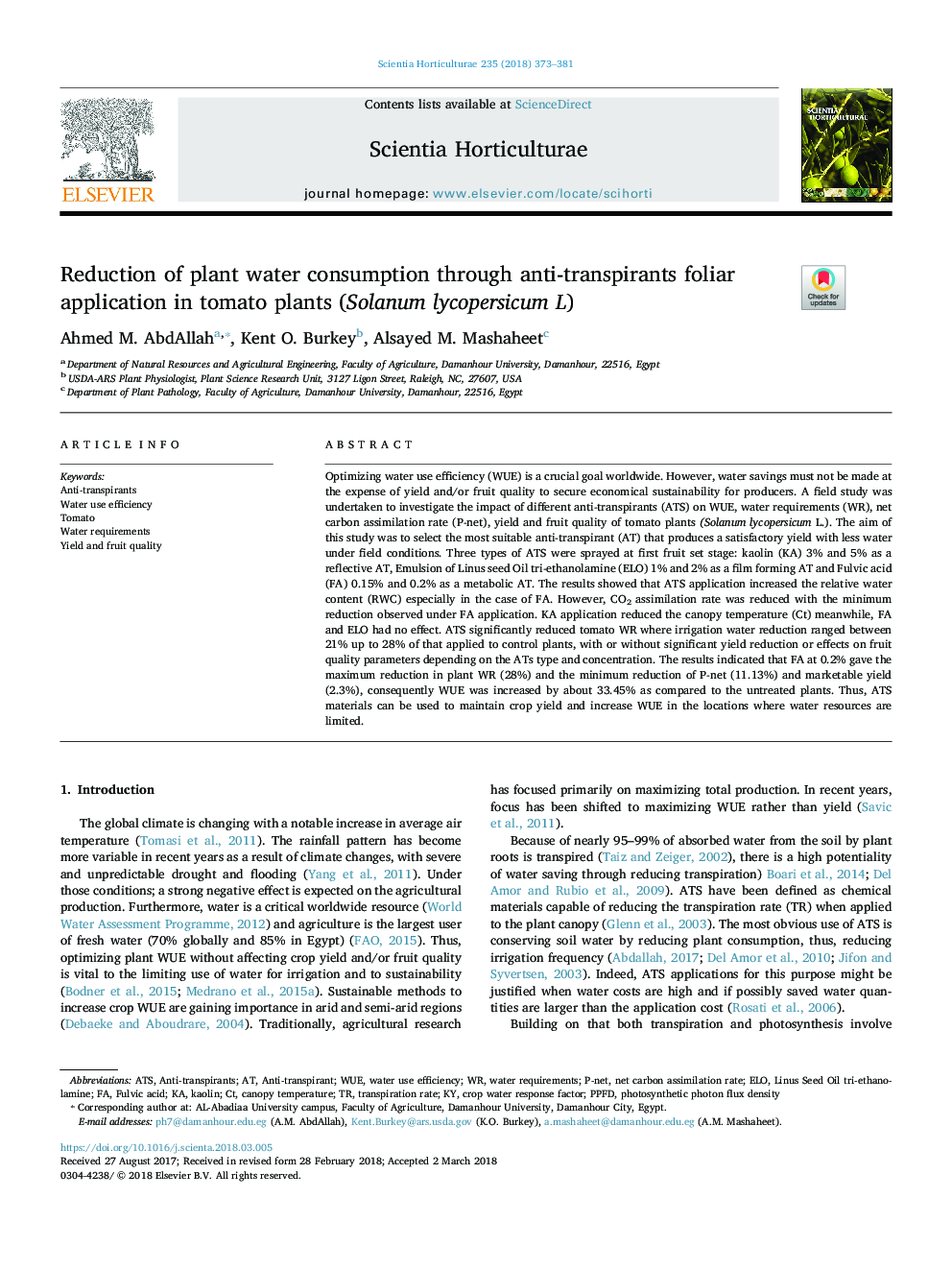| کد مقاله | کد نشریه | سال انتشار | مقاله انگلیسی | نسخه تمام متن |
|---|---|---|---|---|
| 8892716 | 1628763 | 2018 | 9 صفحه PDF | دانلود رایگان |
عنوان انگلیسی مقاله ISI
Reduction of plant water consumption through anti-transpirants foliar application in tomato plants (Solanum lycopersicum L)
دانلود مقاله + سفارش ترجمه
دانلود مقاله ISI انگلیسی
رایگان برای ایرانیان
کلمات کلیدی
موضوعات مرتبط
علوم زیستی و بیوفناوری
علوم کشاورزی و بیولوژیک
دانش باغداری
پیش نمایش صفحه اول مقاله

چکیده انگلیسی
Optimizing water use efficiency (WUE) is a crucial goal worldwide. However, water savings must not be made at the expense of yield and/or fruit quality to secure economical sustainability for producers. A field study was undertaken to investigate the impact of different anti-transpirants (ATS) on WUE, water requirements (WR), net carbon assimilation rate (P-net), yield and fruit quality of tomato plants (Solanum lycopersicum L.). The aim of this study was to select the most suitable anti-transpirant (AT) that produces a satisfactory yield with less water under field conditions. Three types of ATS were sprayed at first fruit set stage: kaolin (KA) 3% and 5% as a reflective AT, Emulsion of Linus seed Oil tri-ethanolamine (ELO) 1% and 2% as a film forming AT and Fulvic acid (FA) 0.15% and 0.2% as a metabolic AT. The results showed that ATS application increased the relative water content (RWC) especially in the case of FA. However, CO2 assimilation rate was reduced with the minimum reduction observed under FA application. KA application reduced the canopy temperature (Ct) meanwhile, FA and ELO had no effect. ATS significantly reduced tomato WR where irrigation water reduction ranged between 21% up to 28% of that applied to control plants, with or without significant yield reduction or effects on fruit quality parameters depending on the ATs type and concentration. The results indicated that FA at 0.2% gave the maximum reduction in plant WR (28%) and the minimum reduction of P-net (11.13%) and marketable yield (2.3%), consequently WUE was increased by about 33.45% as compared to the untreated plants. Thus, ATS materials can be used to maintain crop yield and increase WUE in the locations where water resources are limited.
ناشر
Database: Elsevier - ScienceDirect (ساینس دایرکت)
Journal: Scientia Horticulturae - Volume 235, 17 May 2018, Pages 373-381
Journal: Scientia Horticulturae - Volume 235, 17 May 2018, Pages 373-381
نویسندگان
Ahmed M. AbdAllah, Kent O. Burkey, Alsayed M. Mashaheet,